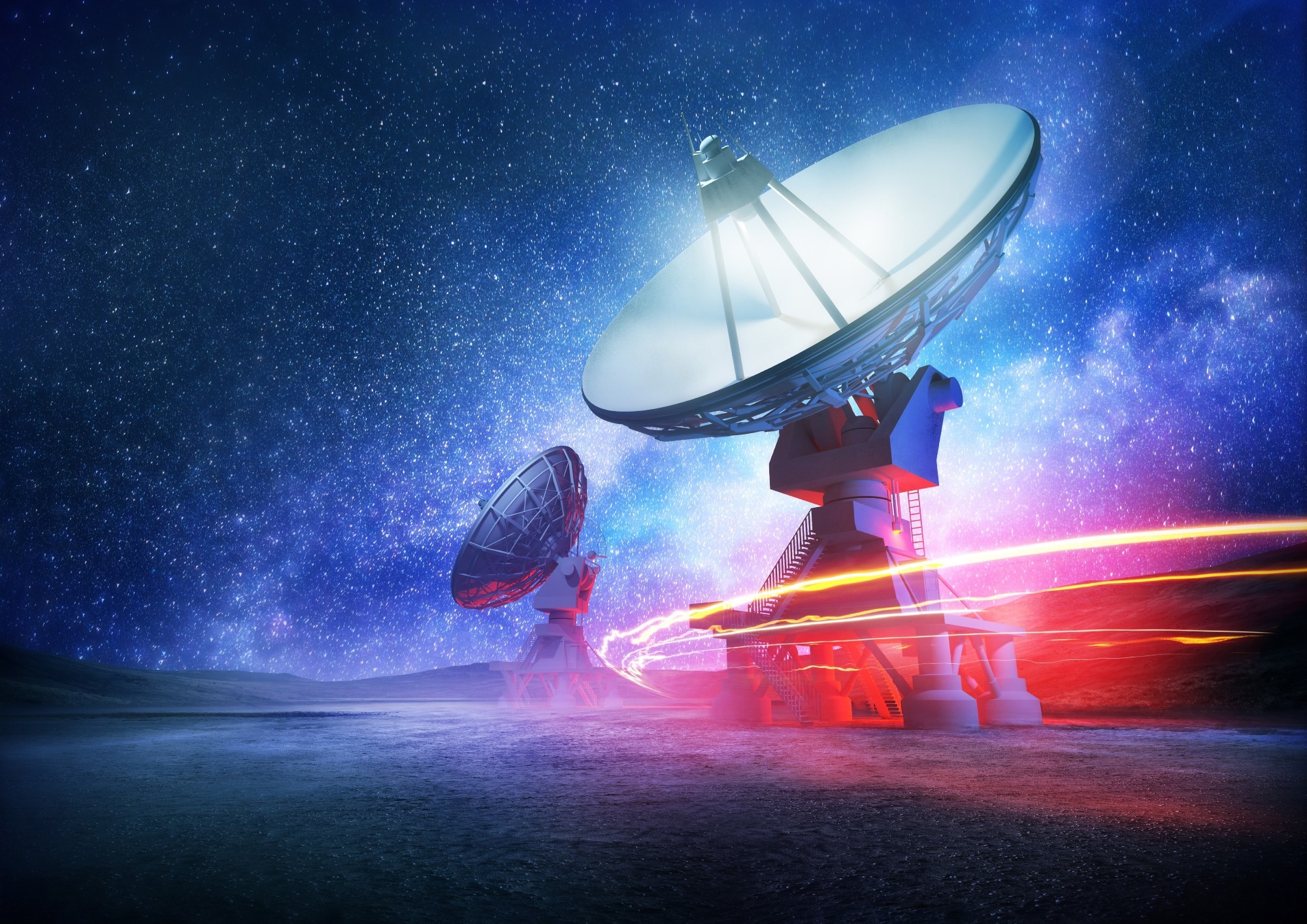In an article recently published in the journal Astronomy and Computing, researchers investigated the feasibility of emerging quantum computers for applications in radio astronomy, specifically radio astronomy calibration.
 Study: Quantum Linear Solvers for Redundant Baseline Calibration. Image Credit: solarseven/Shutterstock.com
Study: Quantum Linear Solvers for Redundant Baseline Calibration. Image Credit: solarseven/Shutterstock.com
Computational Challenges of Radio Telescopes
Large-scale radio telescopes are expected to outgrow the computational capacities of conventional digital resources in the near future. Current and planned telescopes struggle to process the vast amounts of data they generate efficiently.
Calibrating large-scale radio telescopes, particularly phased array telescopes, presents a significant computational challenge. For example, calibrating an 8-hour LOFAR two-meter sky survey (LoTSS) observation consumes approximately 52,000 core hours. Consequently, there is a pressing need to develop methods that can efficiently reduce this computational demand and minimize energy consumption.
Redundant Baseline Calibration
One class of calibration leverages the inherent redundancy in regular arrays to self-calibrate the array with statistical efficiency. This study delves into the quantum-accelerated variant of this calibration method, drawn by its practical relevance and straightforward structure. Moreover, redundancy calibration primarily involves solving sets of linear equations, a task for which effective quantum algorithms are currently available.
The Hydrogen Epoch of Reionization Array (HERA) exemplifies a radio telescope employing an exceedingly regular array configuration. Comprising multiple antennas arranged in a regular hexagonal pattern, HERA exhibits significant redundancy between baselines, rendering it well-suited for redundancy calibration.
The Study
In this study, researchers explored the potential application of combinatorial solvers in quantum annealers (QAs) and variational quantum linear solvers (VQLSs) on noisy intermediate-scale quantum (NISQ) computers for radio astronomy calibration pipelines. Specifically, two distinct quantum computing approaches were investigated: QAs developed by D-Wave and gate-based quantum computers provided by IBM. Calibration, a computationally intensive task in radio astronomy processing pipelines, involves solving sets of linear equations.
The aim was to demonstrate the effectiveness of these approaches in reducing computational costs when integrated into calibration pipelines. While the Harrow-Hassid-Im-Lloyd (HHL) method offers significant speedup compared to classical methods, it has limitations such as hardware constraints and data input boundaries.
Therefore, a variational approach, known as VQLS, was explored, given its compatibility with current hardware. Variational quantum algorithms have gained attention for their effectiveness in harnessing quantum computing power in the NISQ era, with newer variations proposed to address limitations. Many studies have successfully applied this method to solve finite-element problems.
QAs present a viable alternative to gate-based quantum computers and have been extensively evaluated for real-world applications, including power grid management and structural biology studies. D-Wave QAs, accessible via cloud services and boasting over 2,000 qubits, have been utilized for various tasks, including solving linear systems and floating-point calculations.
They were also used in fundamental studies in structural biology and acoustics. These studies employed D-Wave QAs accessible through the cloud and containing over 2,000 qubits. In addition to binary problems, QAs are also suitable for solving linear systems and floating-point calculations.
The researchers integrated a variational quantum linear solver (VQLS) and quadratic unconstrained binary optimization (QUBO) solvers into the redundancy calibration pipeline of the HERA telescope using the Hera linsolve package's dedicated fork.
This seamless integration of quantum solvers within the software suite facilitated the transition between quantum and classical resources for calibration. Experiments were conducted in both ideal and realistic settings, considering factors such as noise, coherence time, and qubit connectivity.
Results were compared based on accuracy, with the VQLS solver employing a full qubit correlation and a real-amplitude variational ansatz, while the QUBO solver used 11 qubits to encode floating-point numbers of the solution vector. However, the study also acknowledged significant limitations of current quantum computers, such as limited connectivity graphs for qubits in QAs like D-Wave chips.
Significance of the Study
The results of the study demonstrated that quantum linear solvers showed promise as a viable tool for obtaining initial estimates of antennas' gains in ideal conditions, where quantum hardware was not constrained by coherence time or qubit connectivity. However, in realistic settings, limitations on coherence time and qubit connectivity significantly hindered the performance of these solvers.
While the variational method implemented on gate-based quantum computers required a relatively small number of qubits for large arrays, it necessitated an exceptionally efficient matrix decomposition scheme to rival classical approaches. Without such a scheme, the computational cost became prohibitive.
Similarly, the combinatorial approach relying on QAs produced highly accurate results but demanded a significant number of physical qubits to overcome limited inter-qubit connectivity on real devices. As a result, existing QAs could only handle small antenna arrays, where classical methods remained competitive.
Overall, the study found no definitive quantum advantage for radio astronomy calibration using current hardware. This underscores the need for further research to develop new quantum solvers with improved performance and hardware that imposes fewer limitations, thereby realizing the computational advantages promised by quantum computing.
Journal Reference
Renaud, N., Rodríguez-Sánchez, P., Hidding, J., Broekema, P. C. (2024). Quantum radio astronomy: Quantum linear solvers for redundant baseline calibration. Astronomy and Computing, 47, 100803. https://doi.org/10.1016/j.ascom.2024.100803, https://www.sciencedirect.com/science/article/pii/S2213133724000180
Disclaimer: The views expressed here are those of the author expressed in their private capacity and do not necessarily represent the views of AZoM.com Limited T/A AZoNetwork the owner and operator of this website. This disclaimer forms part of the Terms and conditions of use of this website.